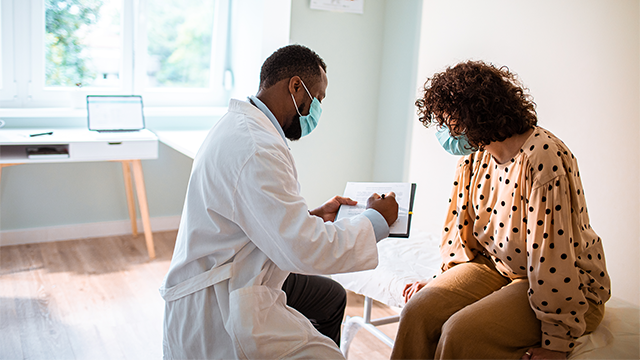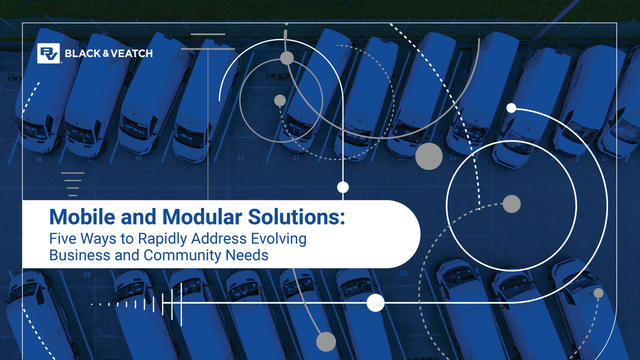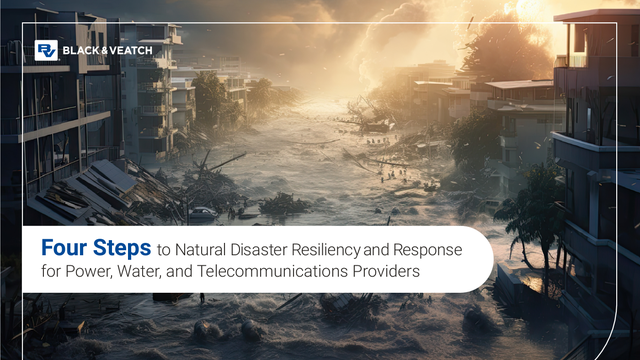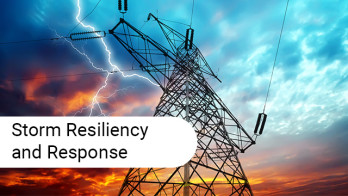Lee Health is one of the largest public health systems in the U.S., serving more than two million patients each year. In September of 2022, Hurricane Ian devastated Lee Health’s service area, including impacts to multiple acute care facilities. In communities all over southwest Florida, many people were unable to leave their homes as major road infrastructure was impassible and alternative transportation was limited. In the months following, Lee Health began to seek rapidly deployable infrastructure solutions to mitigate the impacts of future disasters and support communities in need when impacted by storms.
Pioneering First-of-its-Kind Mobile Infrastructure
Lee Health is a forward-thinking organization, modeling a strategic emphasis on preparedness in order to protect the communities they serve. The Lee Health team was initially introduced to Black & Veatch through the Edison Awards, for which both companies serve as sponsors. As a collaborative effort between Lee Health and Black & Veatch, Hurricane Ian catalyzed an innovative solution: the Mobile Disaster Response Unit (MDRU).
The MDRU features a durable, secure, and sustainable design. The 36-foot-long vehicle is intended to serve as a mobile command center during emergency situations. When the unit is not being leveraged for disaster relief, it can be used to serve underserved communities with two private exam stations and a reception area.
With resiliency top of mind, redundant power supplies were built into the design of the MDRU so Lee Health can operate independently from the grid when needed. During a six-hour pilot test of the vehicle, all the electricity came directly from the rooftop solar system. Even while running the AC unit for multiple people inside the vehicle, the backup generator never had to kick on. The design accounted for water conservation as well: the team installed an incinerator toilet, which requires zero water and no need to offload blackwater. Regarding connectivity capabilities, the MDRU is equipped with 5G networks from all three major wireless carriers to ensure communications are never interrupted. The MDRU is also telehealth-enabled.
Other notable vehicle features include:
4 kW rooftop solar system supported by 28 kWh of battery energy storage
Options for grid independence and interconnection, supported by backup diesel generator
Three redundant 5G high-speed broadband networks with backup satellite internet connectivity
100-gallon oversized freshwater tank with redundant pumping system for handwashing
Onboard air purification system, providing 99.6% pathogen removal in air and on surfaces
Wheelchair lift for patients with mobility challenges
Modern security technology including 360-degree exterior lighting, alarm system and motion sensors
State-of-the-art equipment and devices including 360-degree camera monitoring
With a proven track record of delivering quick-to-deploy, cost-effective, and adaptable mobile solutions, Black & Veatch was an ideal engineering, procurement, and construction (EPC) partner for Lee Health for the turn-key disaster response vehicle. Lee Health officially launched the completed MDRU in March 2024, and both teams look forward to monitoring the positive results and optimizing future vehicles as needed.
What's Next?
The MDRU is intended to be used full-time; outside of states of emergency, it can continue to be leveraged to support underserved communities by bringing much-needed services directly to them. With extreme weather events on the rise, the need for innovative disaster relief solutions will continue to grow. While MDRU certainly cannot prevent hurricanes, it’s designed to lessen the impacts in a meaningful way – especially if these capabilities are scaled to multiple vehicle units in the future.













